Identification & Natural History
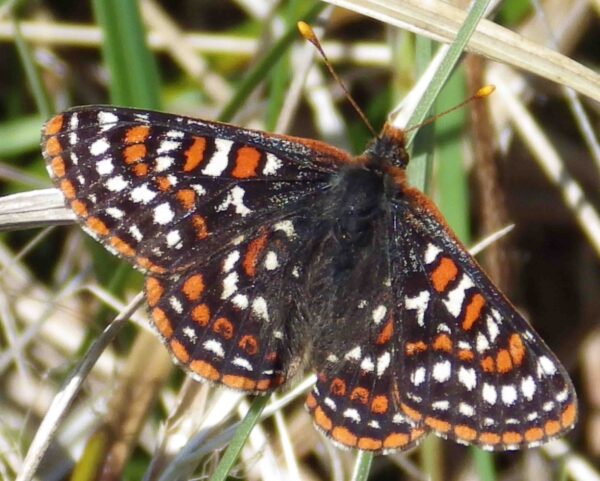
(photo by Chris Junck)
Identification
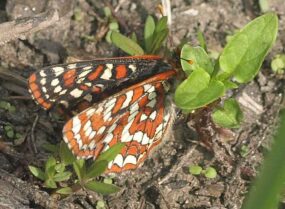
A female TCB carefully selects plants for egg-laying (photo by A Fyson)
Taylor’s Checkerspot (Euphydryas editha taylori) is a small (wingspan 26–43 mm), brightly-hued butterfly. The dorsal wing surfaces of the most common colour form have alternating bands of orange-red, black and white cells. The ventral wing surfaces are predominantly orange with bands of white cells similar in pattern to the dorsal wing surfaces. The thorax and abdomen are black with faint orange bands on the posterior half of the abdomen.
More detailed information about Taylor’s Checkerspot identification, biology, habitat and range can be found here (PDF 2.4MB).
Click here (PDF 6MB) for a handy two-page butterfly identification field guide prepared by Jenny Heron, Chair of our Invertebrates at Risk Recovery Implementation Group.
Life Cycle
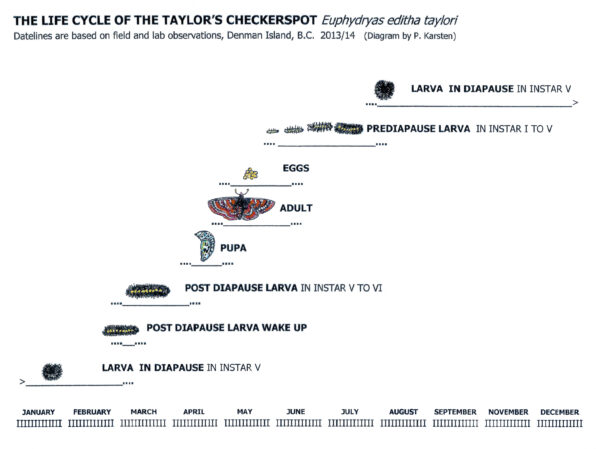
(illustration by P Karsten)
In BC, Taylor’s Checkerspot flight season is from late April through mid-June. The life cycle typically takes one year to complete. The larval life stage overwinters (diapause). Some larvae may diapause a second year.
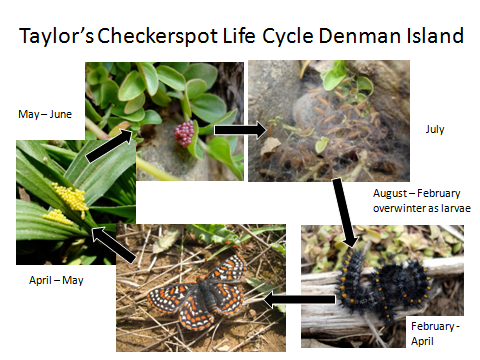
(diagram and photos by J Heron)
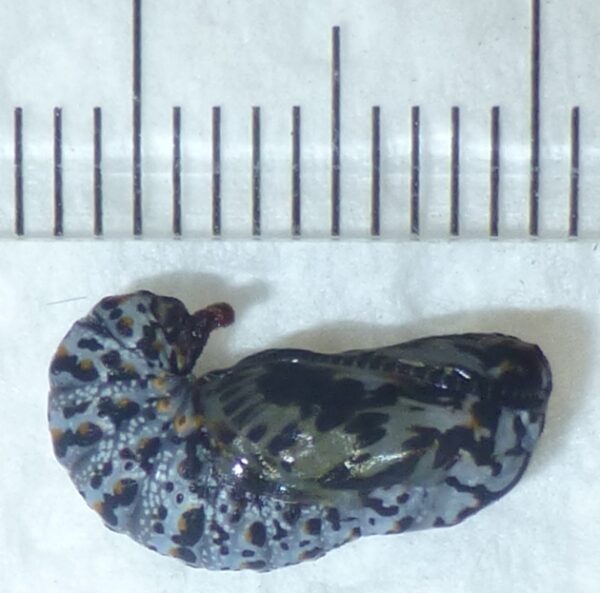
Taylor’s Checkerspot pupa (photo by P Karsten)
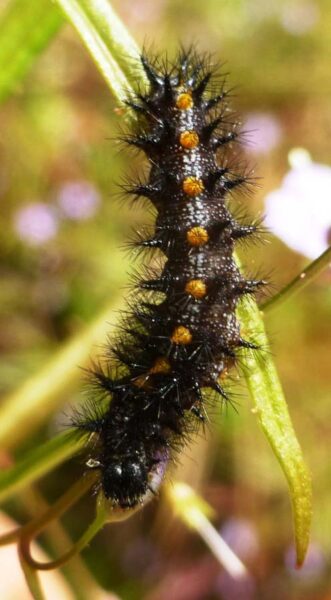
Instar IV larva (photo by P Karsten)